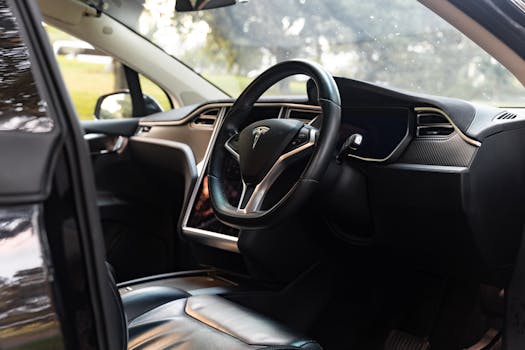
Tesla's groundbreaking electric vehicles have revolutionized the automotive industry, but a persistent and increasingly litigious issue continues to plague the company: "phantom braking." This erratic, unexpected braking behavior, often occurring without any apparent reason, has led to numerous near-miss accidents and driver complaints globally. Now, Tesla faces significant legal challenges in France and Australia, with class-action lawsuits alleging safety defects and demanding substantial compensation for affected drivers. This escalating crisis threatens Tesla's reputation and highlights growing concerns about the safety and reliability of its advanced driver-assistance systems (ADAS), particularly Autopilot.
The Phantom Braking Phenomenon: A Growing Threat
The term "phantom braking" refers to instances where a Tesla vehicle unexpectedly and forcefully applies its brakes, often at low speeds or without any discernible obstacle. Drivers describe these events as jarring, unpredictable, and potentially dangerous. While Tesla attributes some instances to the car's sophisticated sensors reacting to unexpected environmental factors like shadows or bright sunlight, many drivers argue that this explanation is inadequate. The inconsistency and frequency of phantom braking incidents suggest a deeper, potentially systemic issue with Tesla's Autopilot and its sophisticated sensor fusion algorithms.
How Phantom Braking Impacts Drivers
The consequences of phantom braking can range from minor inconvenience to serious safety risks:
- Near-miss accidents: Sudden braking can cause rear-end collisions, particularly in heavy traffic or when following closely behind another vehicle.
- Whiplash and other injuries: The unexpected force of braking can cause whiplash and other injuries to drivers and passengers.
- Psychological trauma: The unpredictable nature of phantom braking can lead to anxiety and fear amongst drivers, particularly those relying heavily on Autopilot.
- Damage to the vehicle: Repeated phantom braking can lead to wear and tear on brake components, potentially leading to more significant mechanical issues.
- Loss of confidence in Autopilot: The prevalence of phantom braking incidents erodes driver trust in Tesla's advanced driver-assistance systems.
Class Action Lawsuits: France Takes the Lead
France has taken a leading role in the legal battle against Tesla regarding phantom braking. A significant class-action lawsuit has been filed, uniting numerous Tesla owners who have experienced this issue. The plaintiffs allege that Tesla's failure to adequately address the phantom braking problem constitutes a serious safety defect, breaching consumer protection laws. They are seeking substantial compensation for damages, including repair costs, medical expenses, and emotional distress. This legal action sets a precedent, potentially inspiring similar lawsuits in other countries.
Australia Joins the Fight
The legal pressure on Tesla is not limited to France. In Australia, a growing number of Tesla owners are also organizing to pursue collective legal action over phantom braking incidents. The Australian Competition and Consumer Commission (ACCC) is closely monitoring the situation, and their involvement could significantly escalate the legal pressure on the company. The Australian lawsuits mirror the concerns raised in France, focusing on alleged safety defects and consumer rights violations.
Elon Musk and Tesla's Response
Elon Musk and Tesla have yet to offer a comprehensive and satisfactory solution to the phantom braking issue. While the company acknowledges isolated incidents, it often attributes them to external factors or software glitches that are being addressed through over-the-air (OTA) updates. This response, however, has failed to fully appease drivers who continue to report the problem. The ongoing litigation suggests that Tesla's approach to addressing the issue has been insufficient and possibly negligent.
The Public Relations Nightmare
Beyond the legal ramifications, the phantom braking issue has created a significant public relations nightmare for Tesla. The negative publicity surrounding these lawsuits undermines the company's image of technological innovation and safety leadership. This damage to reputation could affect future sales and investor confidence. The sheer volume of complaints and the ongoing legal battles paint a picture of a company struggling to resolve a critical safety defect.
The Future of Autopilot and Advanced Driver-Assistance Systems
The Tesla phantom braking lawsuits raise fundamental questions about the safety and reliability of advanced driver-assistance systems (ADAS). While Autopilot offers potentially life-changing convenience and efficiency, the risk of unexpected and dangerous braking events cannot be ignored. This legal battle will undoubtedly influence the development and regulation of ADAS technology globally. It underscores the need for rigorous testing and a higher standard of safety before deploying potentially hazardous automated driving features. Future advancements in sensor technology, software algorithms, and safety protocols will be crucial to minimizing similar incidents and building consumer trust.
Conclusion: A Wake-Up Call for Tesla and the Auto Industry
The class-action lawsuits against Tesla in France and Australia are more than just legal battles; they represent a significant turning point in the development and deployment of autonomous driving technology. Tesla's struggle with phantom braking highlights the crucial need for greater transparency, accountability, and rigorous safety standards for ADAS. The outcome of these lawsuits will not only impact Tesla but also set a precedent for the entire automotive industry, pushing for improved safety measures and a stronger focus on consumer protection in the age of increasingly sophisticated automated driving systems. The future of self-driving technology depends on it.




















